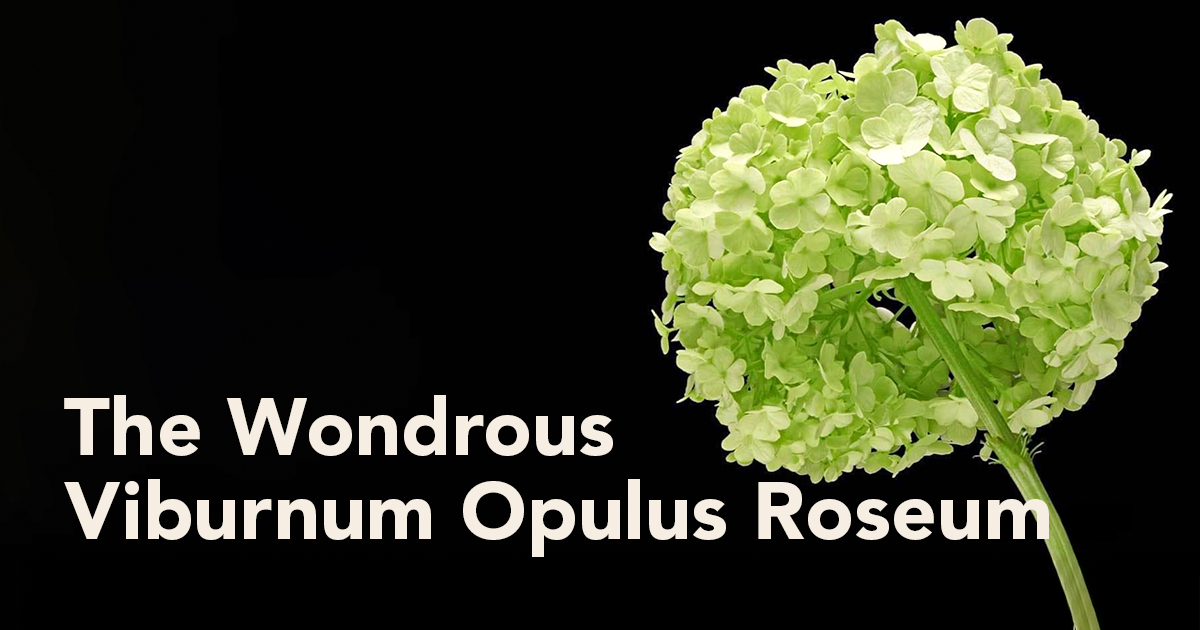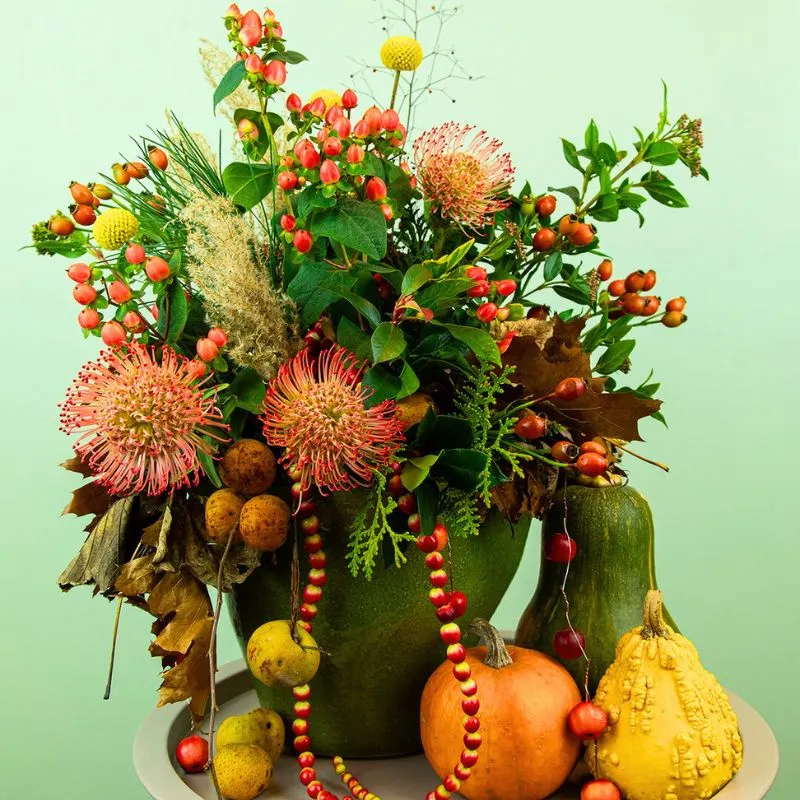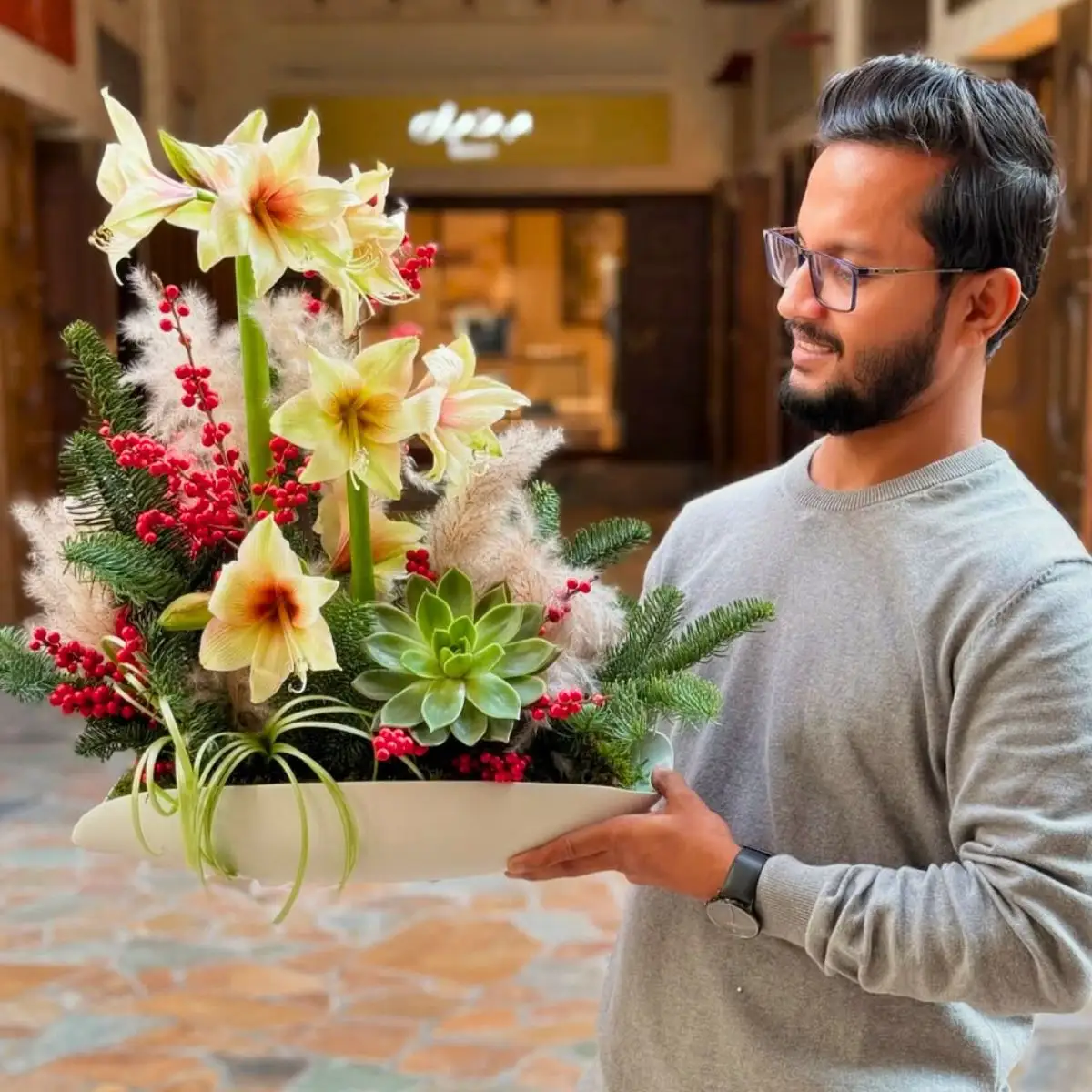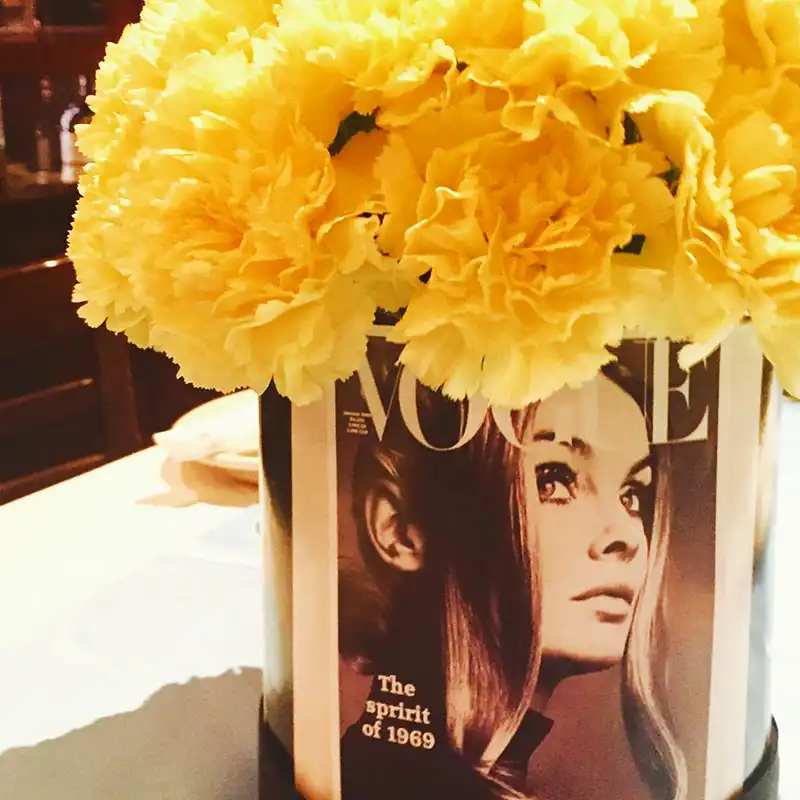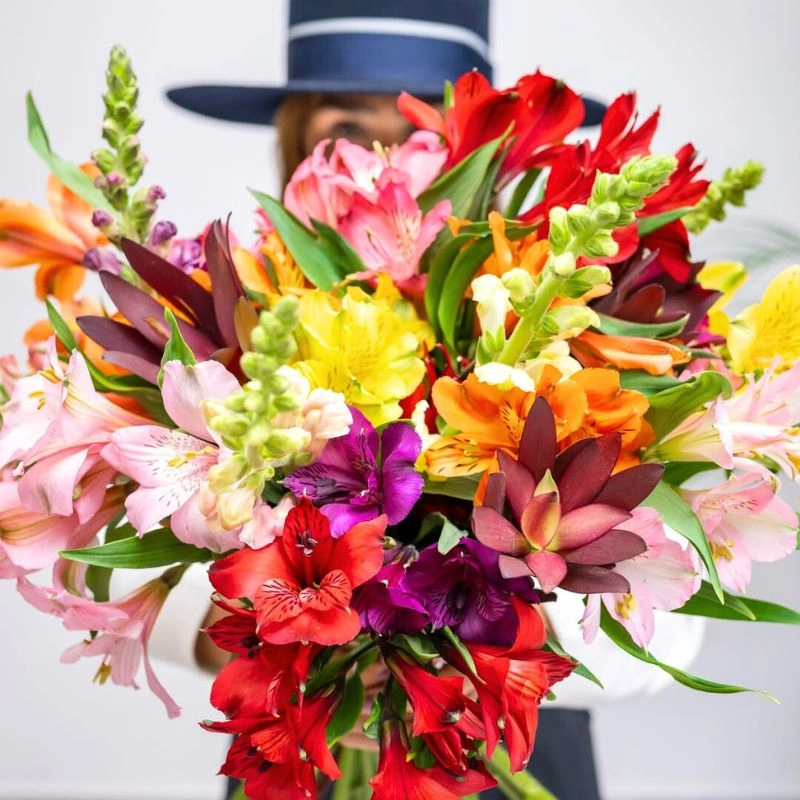Many people adore them: snowballs; the soft greenish-white bloomers that bring that typical wintery feeling to floral arrangements. These cut flowers are also known by their botanical name 'Viburnum opulus Roseum'. In case you wonder if there is already something like an ultimate guide to caring for these Viburnums for florists and consumers, you're in the right place. Learn all you must know from the best: the grower Mediaverdi and the flower food specialists of Chrysal.
Viburnum is also called 'snowball' due to its fluffy, round clusters that bring that typical seasonal touch to any floral arrangement. However, to make the most of these blooms, they need the right handling from the moment they're cut to when they’re finally arranged in vases. This is how you will keep them vibrant, full-flowered, and fresh.
From the Grower to the Florist and Consumer
If there is one grower that is synonymous with top-quality Viburnum it's Mediaverdi. Johan Buis is not only famous for his carnations, but in the fall and winter, he switches to snowballs. His 400,000 stems of snowballs are available from January until mid-April. His cold storage is already packed with the Viburnum plants that have to get into the winter mode.

Johan:
"The low temperatures of 5 degrees Celsius in the cold room make the flower buds go into a state of dormancy and consequently the stems lose their leaves. After six weeks we will then be able to put these plants in the greenhouse to warm up to 25 degrees Celsius. There, they will "think" it is already spring and will start to bloom. A completely natural process. After four weeks I can start harvesting the first consumer-ready snowballs, and the plants rotate back to our outdoor nursery for the next year."
Mediaverdi sells its Viburnums to wholesalers through direct sales and the clocks of Royal FloraHolland in Aalsmeer, only a 5-kilometer drive from his nursery. To give his flowers a head start in the long floral chain he uses Chrysal Grow 30 as a post-harvest solution. And Johan also already thinks of the end-consumer, as every single bunch that leaves his nursery comes with an attached sachet of Chrysal Syringa flower food.

Proper Display Techniques for Florists
For florists, Viburnum provides a fresh, seasonal appeal in spring and early summer arrangements. Its unique form and lush volume add texture and depth, making it ideal for everything from romantic bouquets to more structured designs. Viburnum is particularly well-suited for winter and spring weddings, where it complements both delicate flowers like lilacs, as well as bold blooms like roses and orchids.

For consumers, Viburnum’s vibrant clusters offer a subtle elegance, filling rooms with a natural, airy vibe. Providing customers with a bit of education on flower care not only extends the vase life of Viburnum but also enhances their appreciation of these delicate blooms, encouraging them to return for more.
Snowballs make an excellent focal point or filler flower due to their spherical shape and delicate appearance. However, their beauty can fade quickly if exposed to heat, sunlight, or drafts. Here are some best practices for displaying Viburnum in your floral shop.
- Choose a Cool Spot: Keep arrangements containing Viburnum away from direct sunlight, heating vents, or entryways with frequent drafts. Even in a shop, small environmental changes can speed up wilting.
- Use Clean Vases and Tools: Ensure all vases, buckets, and tools are thoroughly cleaned. Bacteria is a major enemy for cut flowers, causing premature decay and reducing vase life.
- Encourage Proper Customer Care: Providing flower food sachets like Chrysal’s Universal Paper Sachet to customers helps ensure the blooms last longer once they leave the shop. Be sure to give instructions on vase water maintenance to keep those Viburnum blooms looking their best.


Start With Fresh, Properly Cut Stems
One of the most important steps in caring for Viburnum is ensuring the initial cut is done correctly. Viburnum stems are woody, which can inhibit water uptake if they aren’t prepared right. Cut the Stems at an Angle: Using a clean, sharp knife or pair of secateurs, cut the stems at a 45-degree angle. This not only prevents the stem from resting flat against the vase bottom but also exposes more surface area for water absorption.
Once the Viburnum stems are cut, hydration is key. Chrysal recommends florists to use Chrysal Professional 2. Conditioning with this solution in shop buckets helps slow down flower opening and maintains peak freshness, which is ideal for showcasing the blooms in a store setting.

Home Care Tips for Viburnum Cut Flowers
So, there they are: your purchased bunch of wonderful snowballs. For customers who are eager to enjoy Viburnum at home, simple care techniques can help extend the life of these blooms.
Start with a clean vase. A glass vase that’s thoroughly cleaned is ideal for Viburnum. This keeps bacteria from clogging the stems, ensuring optimal water flow. Your next point of attention is to trim stems every few days. Recut the stems every two to three days to refresh water intake. This routine, paired with adding flower food each time, can extend Viburnum’s vase life by several days. Replace the water completely at the same moment you cut a bit off. This simple habit helps prevent bacterial growth.
Placement matters. Just like in the flower shop Viburnum is sensitive to temperature fluctuations, so it should be placed in a cool, draft-free spot, out of direct sunlight. This reduces the risk of premature wilting and helps maintain the flower's delicate texture.
And always add flower food. Chrysal Syringa or Chrysal Paper Sachet works wonders in maintaining Viburnum’s freshness. The nutrients help the flower heads stay plump and healthy while preventing the leaves from yellowing.

Troubleshooting: Handling Common Viburnum Issues
Viburnum can sometimes present unique challenges, especially if not conditioned properly. In case the blooms start to wilt or if clusters begin to droop, this could be due to an air block in the stem. Simply re-cut the stem ends and place them in warm water for 10 minutes to encourage hydration. Johan Buis from Mediaverdi knows an even more drastic approach:
"A good-quality stem of snowballs is really strong and can easily outlast most flowers in a bouquet. If a quick cutting off a bit does not work, I might have an alternative solution. One of my former employees had a trick to submerge the whole stem, including the flower, in a container of water. The flower will definitely soak itself to the fullest and will probably bloom again."

In the case of yellow leaves, this is often a sign of insufficient nutrients. Chrysal’s floral solutions can prevent this by providing essential nutrients., like the Chrysal Paper Sachet.
By implementing these care techniques, florists can ensure their Viburnum stands out in the shop and at events, while consumers get to enjoy their stunning beauty at home for days on end. When properly cared for, the Viburnum snowball delivers an unforgettable display of softness and elegance, making it a flower worth investing a little extra care.
Photos courtesy of Mediaverdi, unless otherwise noted.
Header image by Paul Heijmink Photography.

